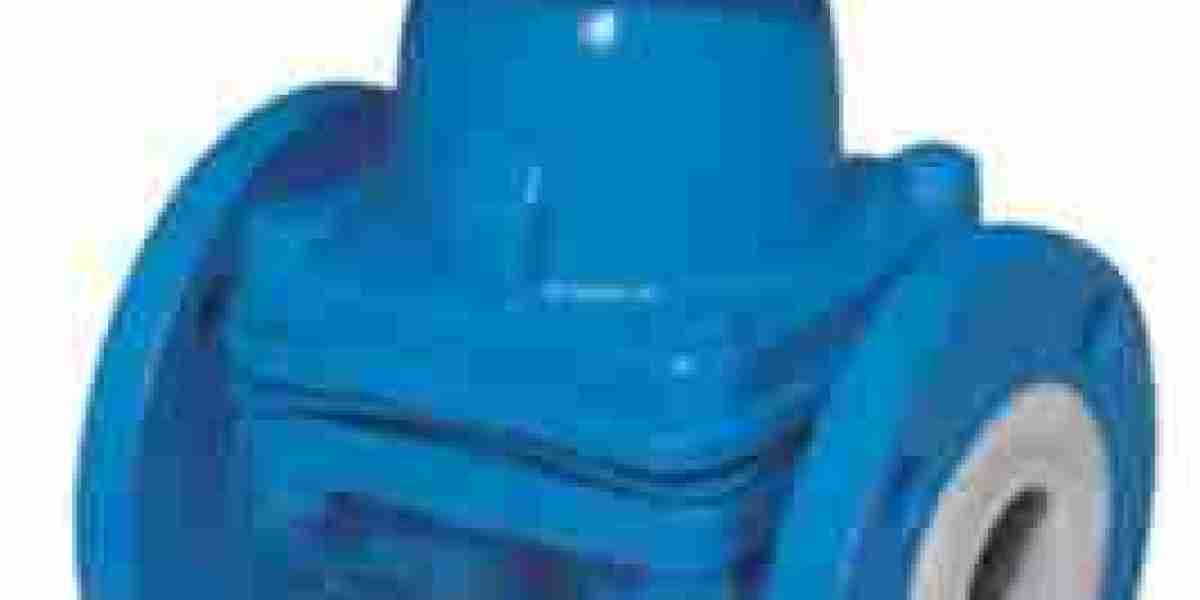Speciality Valve emerges as the premier Diaphragm Valve Manufacturers in India. With a widespread supply network, Speciality Valve serves critical industrial hubs across India, providing prompt and efficient delivery of valves to meet the needs of various sectors.
What is Diaphragm Valve?
A diaphragm valve serves as a crucial control mechanism, enabling precise regulation of liquid or gas flow within pipelines. Comprised of a flexible diaphragm or membrane, typically fashioned from rubber or synthetic materials, it is strategically positioned within the valve body.
Key Functionality:
Central to its functionality is the diaphragm's ability to modulate flow. By either lowering or raising the diaphragm, the valve orchestrates the allowance or restriction of fluid or gas passage. Distinguishing itself with a tight seal, the diaphragm valve excels in leak prevention and ensures meticulous flow control. This seal is achieved as the diaphragm presses against the valve seat in the closed position, halting flow, and lifts away from the seat in the open position, facilitating fluid passage.
Versatile Applications:
Diaphragm valves find widespread application across diverse industries where precise fluid or gas flow control is imperative. Particularly adept at handling corrosive or abrasive materials, they excel in environments demanding cleanliness and sterility.
Parts:
Valve Body: The main housing of the valve, containing the internal components.
Diaphragm: A flexible membrane positioned within the valve body that regulates fluid or gas flow.
Compressor or Actuator: A mechanism responsible for controlling the movement of the diaphragm, either manually or automatically.
Bonnet: The cover or top portion of the valve body, providing access to internal components. Stem or Compressor Stem: A rod connecting the actuator to the diaphragm, transmitting motion for valve operation.
Yoke: A structural support connecting the actuator to the valve body.
Connections: Ports or fittings allowing the valve to be connected to piping or tubing. Handwheel or Control Mechanism: A manual control device for operating the valve, commonly used for smaller sizes.
Working Of Diaphragm Valve:
The working principle involves the movement of a flexible diaphragm to control the flow of fluid or gas through the valve. Here's a step-by-step breakdown of how it operates:
Initial Position: In the initial position, the diaphragm valve is typically in the closed state, blocking the flow of fluid or gas.
Actuation: To open the valve, the actuator—whether manual, pneumatic, or electric—is engaged. This mechanism applies force to the diaphragm, causing it to move away from the valve seat.
Diaphragm Movement: As the actuator moves, it applies force to the diaphragm, causing it to lift or retract from the valve seat. This action creates an opening in the valve, allowing fluid or gas to flow through.
Fluid Flow: With the diaphragm lifted, fluid or gas can now flow through the valve, following the path determined by the valve design and the position of the diaphragm.
Controlled Flow: The flow rate can be regulated by adjusting the position of the diaphragm.
Closing the Valve: To close the valve, the actuator is disengaged or reversed, causing the diaphragm to return to its initial position. As the diaphragm moves back, it presses against the valve seat, effectively sealing off the flow of fluid or gas.
Sealing: The tight seal between the diaphragm and the valve seat ensures there are no leaks when the valve is closed, maintaining the integrity of the fluid or gas system.
Maintenance: Diaphragm valves are designed for easy maintenance. The diaphragm can be inspected or replaced without the need for disassembling the entire valve, reducing downtime and maintenance costs.
Advantages:
Excellent Flow Control: Precise regulation of fluid or gas flow rates.
Bubble-Tight Seal: Ensures leak-free performance.
Wide Range of Applications: Suitable for diverse industrial environments.
Low Maintenance: Minimal upkeep required for continued operation.
Easy to Clean: Simplified design facilitates cleaning and maintenance procedures.
Wide Temperature and Pressure Range: Operates effectively across varying conditions. Corrosion Resistance: Resistant to corrosion, prolonging service life.
Long Service Life: Offers durability and reliability over extended periods.
Safe for Hazardous Media: Suitable for handling hazardous fluids or gases.
Quick Opening and Closing: Rapid response for efficient flow control.
Low Pressure Drop: Minimizes energy loss during operation.
Reliable Operation: Consistent performance under demanding conditions.
Industries:
Chemical Processing
Water and Wastewater Treatment
Pulp and Paper
Semiconductor Manufacturing
Mining
Power Generation
Oil and Gas
Petrochemicals
Automotive Manufacturing
Textiles
Marine and Shipbuilding
Aerospace
Diaphragm Valve Manufacturers in India play a pivotal role in many industries, offering components that are of high quality and strength.
Description:
1. Available Materials: Includes Cast Iron, Ductile Iron, Alloy 20, WCB, WC6, WCC, LCB, LCC, SS304, SS316, CF8, CF8M.
2. Sizes: ½” to 12”
3. Class and Nominal Pressure: Class 150 to 600 and Nominal Pressure PN10 to PN100
4. Operation: handwheel and pneumatic and electric actuators.
5. Ends: flanged or threaded ends.
Certainly! If you're looking for high-quality valves, you can visit at: https://www.specialityvalve.com/product-category/diaphragm-valve/
Address:– 43, Satra Plaza, 19D, Palm Beach Rd, Juhu Nagar, Phase 2, Sector 14, Vashi, Navi Mumbai, Maharashtra 400703







